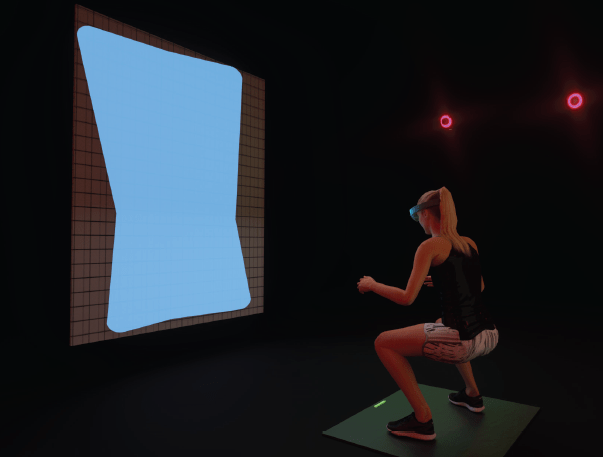Biofeedback System Reduces Risk of Anterior Cruciate Ligament Injury in Adolescent Female Athletes
Published November 2020 | Journal of Sport Rehabilitation
For adolescent female athletes, risk of anterior cruciate ligament (ACL) injury is high. Existing prevention programs have failed to reduce the rates of these injuries. Can mind-body therapy help?
Using biofeedback—a technique that teaches individuals how to better control their body’s functions—researchers in the Division of Sports Medicine designed a new system to reduce the risk factors associated with ACL injuries. The innovative system works by simultaneously providing real-time, interactive, visual feedback about a wider range of biomechanical variables (knee, trunk, and hip) than previous approaches (knee only).
In a medical center laboratory, researchers tested the system with 20 adolescent females. Participants performed sets of bodyweight squats in several training blocks for a total of 110 squats. Half of the participants were randomly assigned to receive a real-time feedback block first, while the other half received a control (sham) feedback block first.
Compared with performance when participants squatted with the sham stimulus, heat map analysis revealed that interaction with the real-time feedback improved squat performance. These results show the system’s significant impact on movement biomechanics during performance of a bodyweight squat—an exercise that is fundamental to longer-term ACL injury risk reduction intervention.
“Stopping ACL injuries in adolescent females prevents the potential ending of an athletic career and other associated trauma, including significant pain, depression, decreased athletic identity, and lower academic performance,” says lead author Scott Bonnette, PhD. “This may also greatly reduce the associated amplified risk of a subsequent ACL injury, likelihood for long-term disability, and risk of early osteoarthritis and chronic pain.”
Next, researchers plan to develop the system from a research tool to a clinic-ready platform, preventing ACL injuries on a wide scale.
An athlete performs a squat exercise during the biofeedback study.




